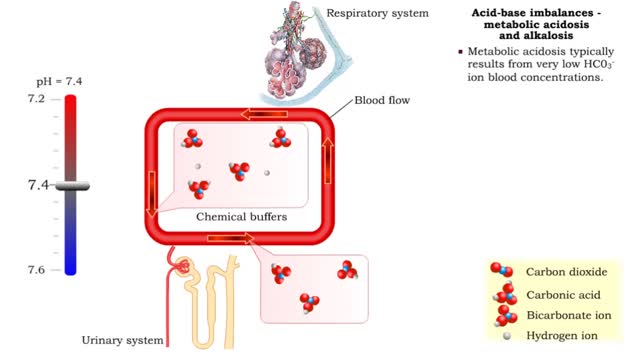Role of the urinary system - acidosis and alkalosis
• Tubular cells of the proximal convoluted tubule and collecting tubules can alter filtrate pH and therefore blood pH. • These cells can affect blood pH with two coupled mechanisms: • Reabsorption of bicarbonate ions. • Secretion of hydrogen ions. • The reabsorption of bicarbonate ions is dependent on the secretion of hydrogen ions. • Blood pH is lowered when PCO2 is high. • CO2 molecules diffuse out of blood into tubular cells and form carbonic acid. • Carbonic acid breaks up into H+ and HCO3- ions. • The secretion of H+ ions, coupled with Na+ ion reabsorption, reduces acidity of blood. • Driven by an electrochemical gradient, the reabsorption of bicarbonate ions buffers the acidity of the blood. • pH returns to normal levels. • Hydrogen ions are actively transported into the interstitial fluid setting up an electrochemical gradient. • Driven by an electrochemical gradient, the inflow of chloride ions provide energy for bicarbonate ion secretion. • The loss of bicarbonate ions reduces the buffering reserves Of body fluids, decreasing blood pH back to normal.
Add To
You must login to add videos to your playlists.
Advertisement












Comments
0 Comments total
Sign In to post comments.
No comments have been posted for this video yet.